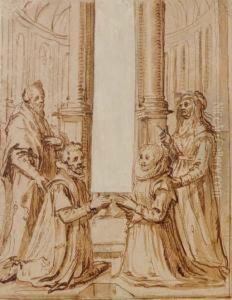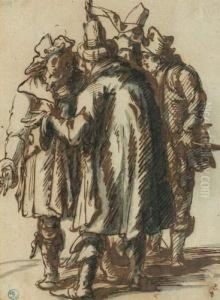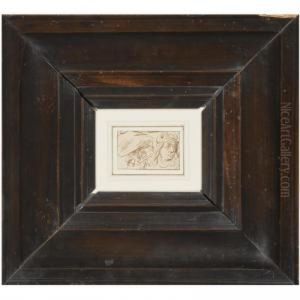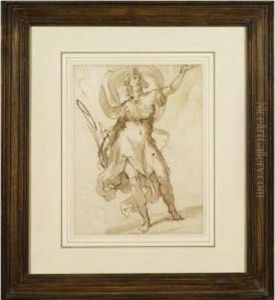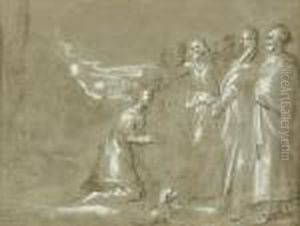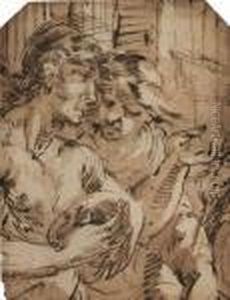Jan Phillipsz Van Bouckhorst Paintings
Jan Phillipsz Van Bouckhorst, also known as Johan Philip van Bouckhorst, was a Dutch Golden Age painter whose exact dates of birth and death are somewhat uncertain, with estimates placing his birth around 1610 and his death around 1666. Van Bouckhorst was born in Gouda, in the Dutch Republic, and is primarily known for his genre paintings and portraits. His works reflect the rich artistic traditions of the period, characterized by meticulous attention to detail, a vibrant palette, and a focus on the depiction of light.
Not much is known about Van Bouckhorst's early life or training. It is believed that he was active in Gouda and later in The Hague, where he became a member of the painter's confraternity, Pictura. His style suggests that he may have been influenced by other Dutch painters of his time, such as the Haarlem school, which included artists like Frans Hals known for their lively and spirited portraits.
During his career, Van Bouckhorst contributed to the rich tapestry of Dutch genre painting, which depicted scenes of everyday life. His works often contained moralistic messages or allegories, a common theme in the art of the Dutch Golden Age. In addition to genre scenes, he also painted guardroom scenes, which were popular at the time and typically featured soldiers engaged in various activities within an interior setting.
Unfortunately, Van Bouckhorst did not gain widespread fame during his lifetime, and as a result, his works are less well-known today compared to those of his contemporaries. His paintings were nonetheless valued in the market of his time, and he managed to make a living as an artist—a significant achievement in the competitive artistic climate of the 17th century Dutch Republic.
After his death, which is presumed to have occurred around 1666, Van Bouckhorst's contributions to Dutch painting became overshadowed by the works of more famous artists. Nevertheless, his surviving paintings continue to be of interest to art historians and collectors who appreciate the depth and variety of the Dutch Golden Age. Today, his works can be found in various museums and private collections, where they serve as a testament to the diverse and rich world of 17th-century Dutch art.
